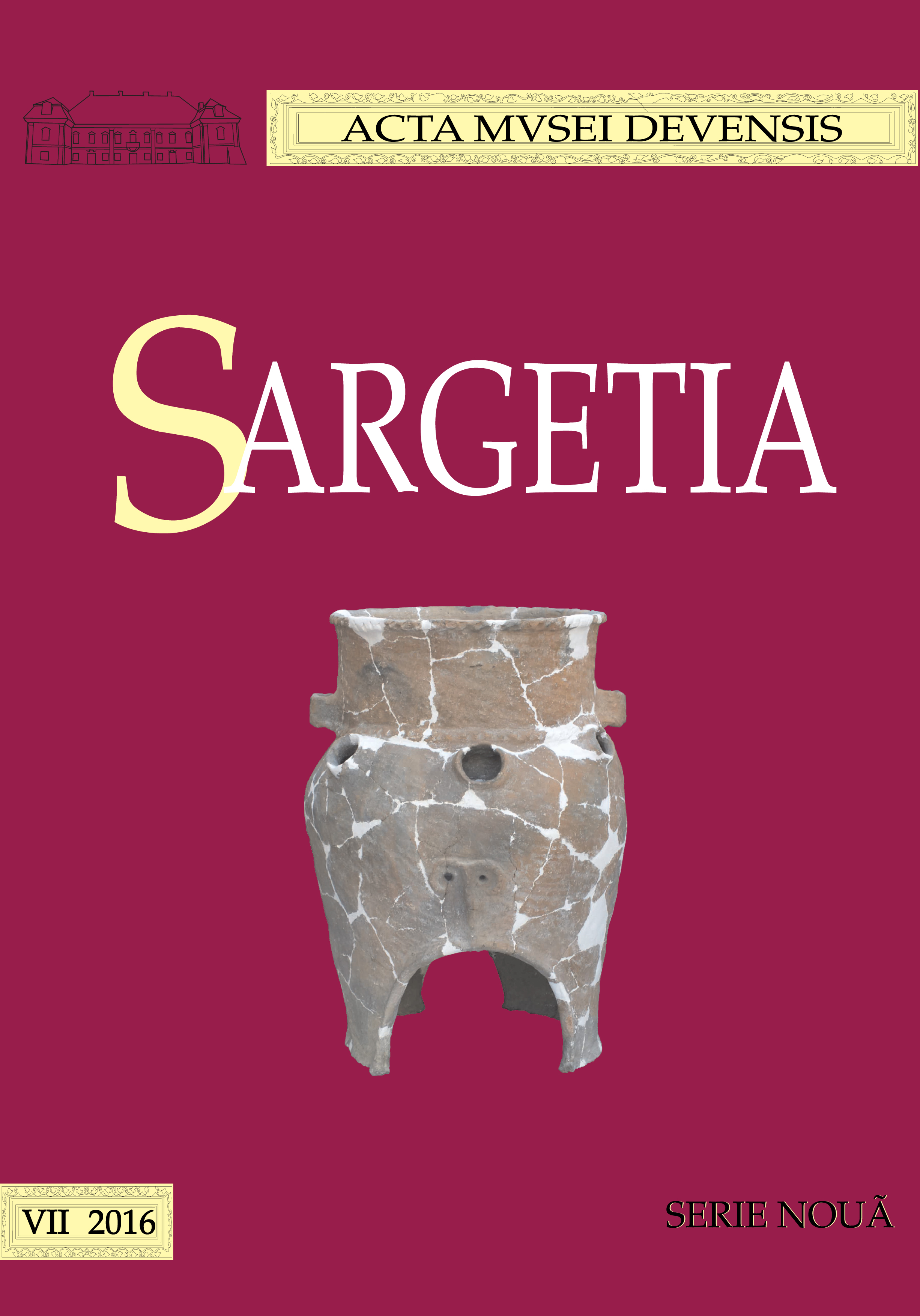Studiu mineralogic preliminar privind tipurile de roci de pe şantierul arheologic Ardeu – Cetăţuie, jud. Hunedoara
Preliminary Mineralogical Study on the Types of Rocks from Ardeu – Cetăţuie Archaeological Site, Hunedoara County
Author(s): Valentina Cetean, Iosif Vasile FerenczSubject(s): Archaeology
Published by: Editura Altip
Keywords: Dacian hillfort; rocks; resources; Ardeu; Dacia
Summary/Abstract: 1. Description of the area The site is placed on the southern part of the Apuseni Mountains. The access by car is easy coming to DN 7 (E 68) road, on about 2,5 km East to Orăştie, and then to the North, on DJ 705 road (Fig. 1).2. Description of the archaeological siteThe archaeological site include the peak named Cetăţuie, but also, Dealul Judelui, a flat plateau placed eastward and the lower places on the South, till the bank of the Ardeu stream (Fig. 2).We believe that in the Antiquity and also in the Middle Ages a certain road placed on the eastern and southern sides of the hill was used. The archaeological site was investigated starting to the end of the 19th century, and the research are still continuingtoday. Now we know that the site was inhabited during different historical periods (Fig. 3). But the most intense period of habitation belonging to the Dacian Kingdom (Fig. 2).3. Mineralogical descriptionThe geological deposit of limestone in Ardeu is framed to the prelaramic sedimentary cover, represented by Jurassic age deposits sandstone and carbonated. In terms of mineralogical composition, the limestone from Ardeu – Cetăţuie area containing more than 90% calcite, clay minerals and limonite. An example of these is described in the annexe no 3. On this paper we are included five petrographic rock types analyzed according to the geological standards. Regarding of this objective, our preliminary mineralogical study identifies five types of rocks described on the annexe 1-5.4. ConclusionsThe ensemble in Ardeu, in the Dacian times included buildings and other improvements. (Fig. 2). All of them they were built of diverse types of materials: wood, clay or rocks using different construction techniques. On the annexe 3 is described the local rock (A.PF.3), which was used for building the fortification wall and to some other purposes. Another petrographic variety is described on the annexe 2 (A.PF.2). This is coming from a different location. This kind of rock was cut by the Dacians, making blocks with regular shapes, used to build the basis of the nobleman palace in Ardeu (Fig. 4).Another example of rock found in Ardeu is sandstone (A.PF.4) – annexe 4. A lot of pieces of this rock are found on the surface, but also on the excavations. It could be coming from the area, from Bozeş or Mada villages. They could be used for paving, walls, construction basis, steps or fences (Fig. 5-8) as the villagers in modern times are doing. A.PF.1 (annexe 1) is an example of rock which is coming from another location. We don’t know too much about the destination of the pieces made of this kind of rock. But we think that it is possible to be a fragment of a rotative quern. The last example (A.PF.5) – annexe 5 is coming from the neighbouring hills and we do not have yet some clues about using of it in Antiquity. Our study just begun in Ardeu, but on the next stage we are proposing to make a prospection on the neighbouring areas.
Journal: Sargetia. Acta Musei Devensis
- Issue Year: 2016
- Issue No: 7
- Page Range: 45-66
- Page Count: 22
- Language: English, Romanian

